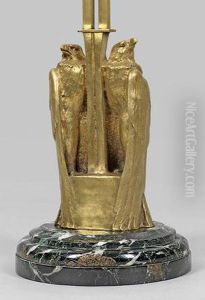Anton Puchegger Paintings
Anton Puchegger was an Austrian artist, born in 1888 in Austria-Hungary. His life and career were both brief, as he died at the young age of 27 in 1915, amid the turmoil of World War I. Despite his short life, Puchegger made a notable impact in the art world, particularly within the realms of painting and graphic art.
Puchegger's work is often characterized by its expressiveness and the emotional depth, reflecting the broader movements of early 20th-century art in Europe, which were marked by a transition from traditional to more avant-garde forms. Although specific details about his training and influences are scarce, his art suggests that he was well-versed in the contemporary movements of his time, possibly drawing from expressionism and early modernist trends. His pieces often explored themes of human experience, nature, and the existential queries that pervaded the era's intellectual discourse.
Unfortunately, Puchegger's career was cut tragically short by his death in World War I, a fate that befell many artists of his generation. His demise during these tumultuous times meant that much of his potential remained unfulfilled, leaving the art world to wonder what contributions he might have made had he lived longer. Despite this, his existing works serve as a testament to his talent and the poignant vision he had for his art.
Today, Anton Puchegger is not as widely recognized as some of his contemporaries, largely due to his brief career and the limited body of work he left behind. However, among art historians and enthusiasts of early 20th-century European art, he is appreciated for his unique voice and the sensitivity with which he approached his subjects. His art remains a valuable window into the aesthetic and existential concerns of a world on the brink of profound change.
